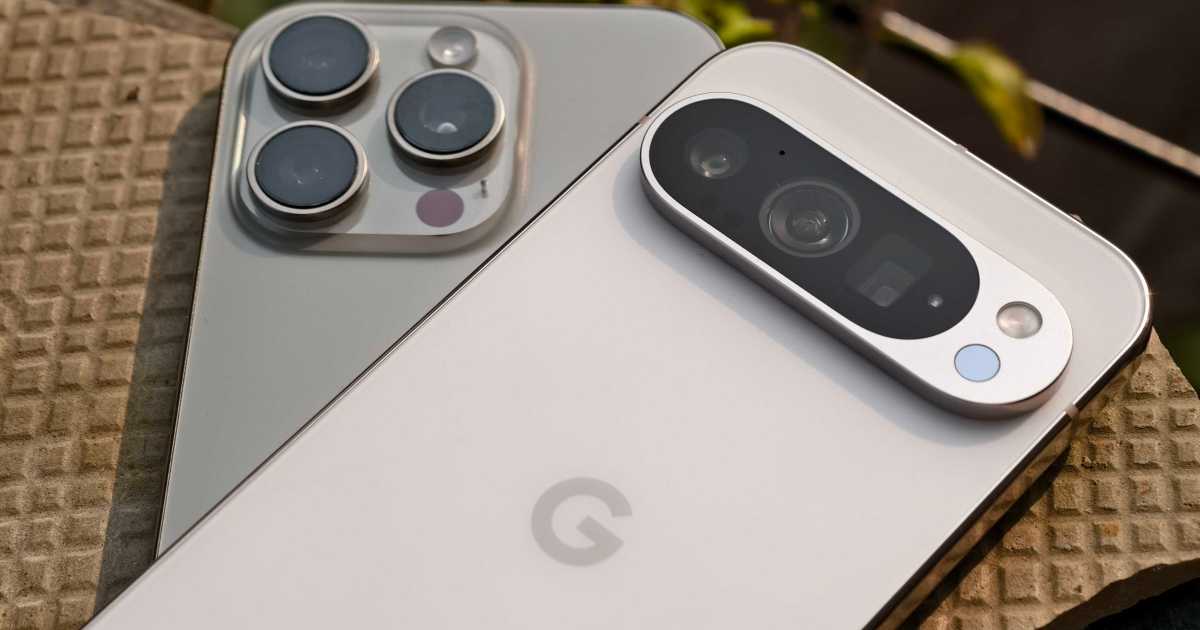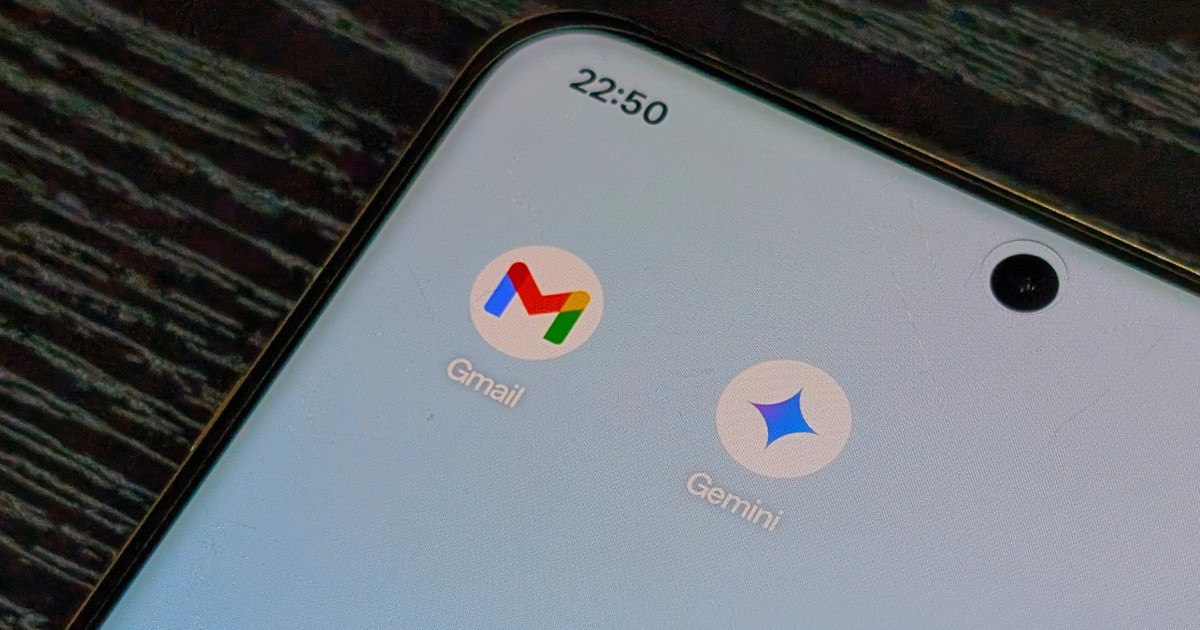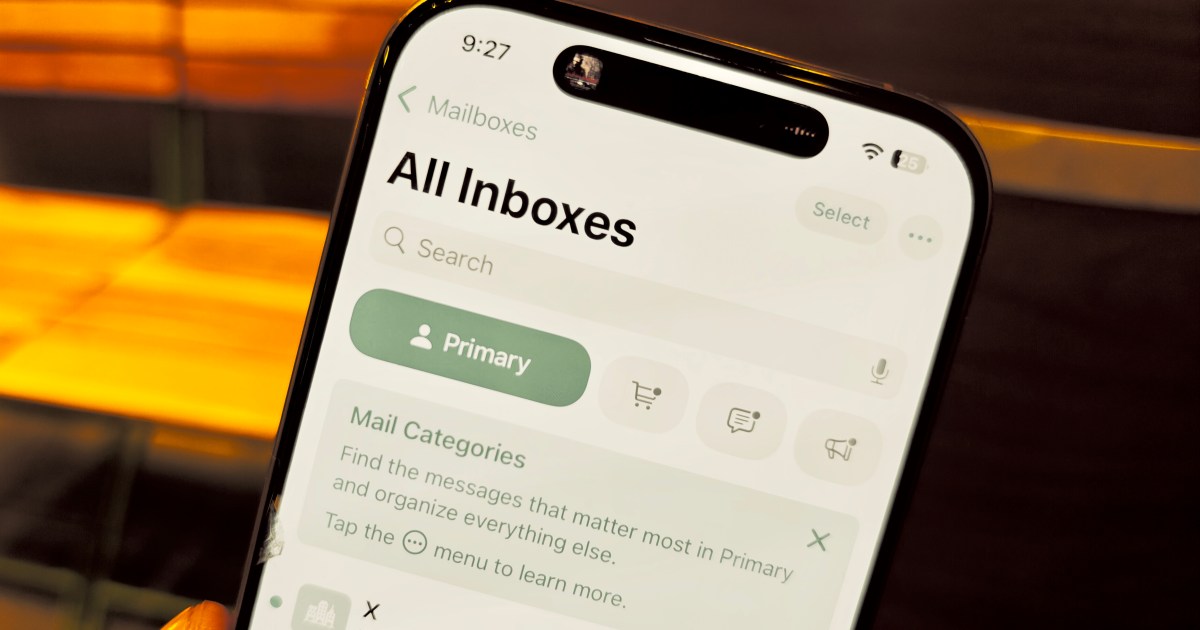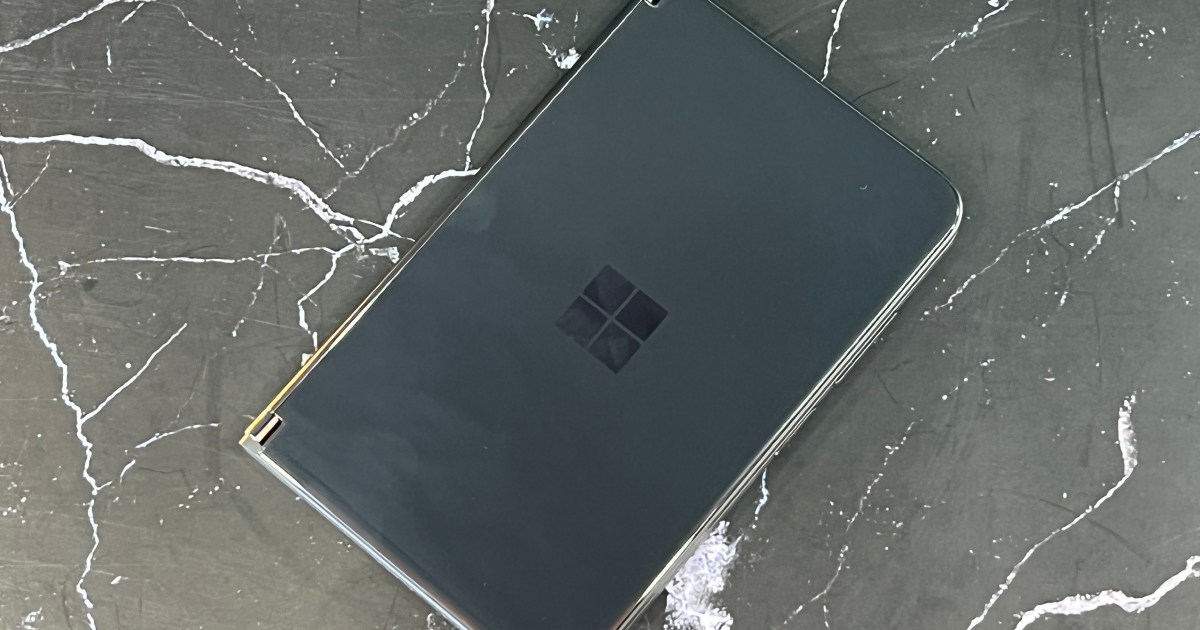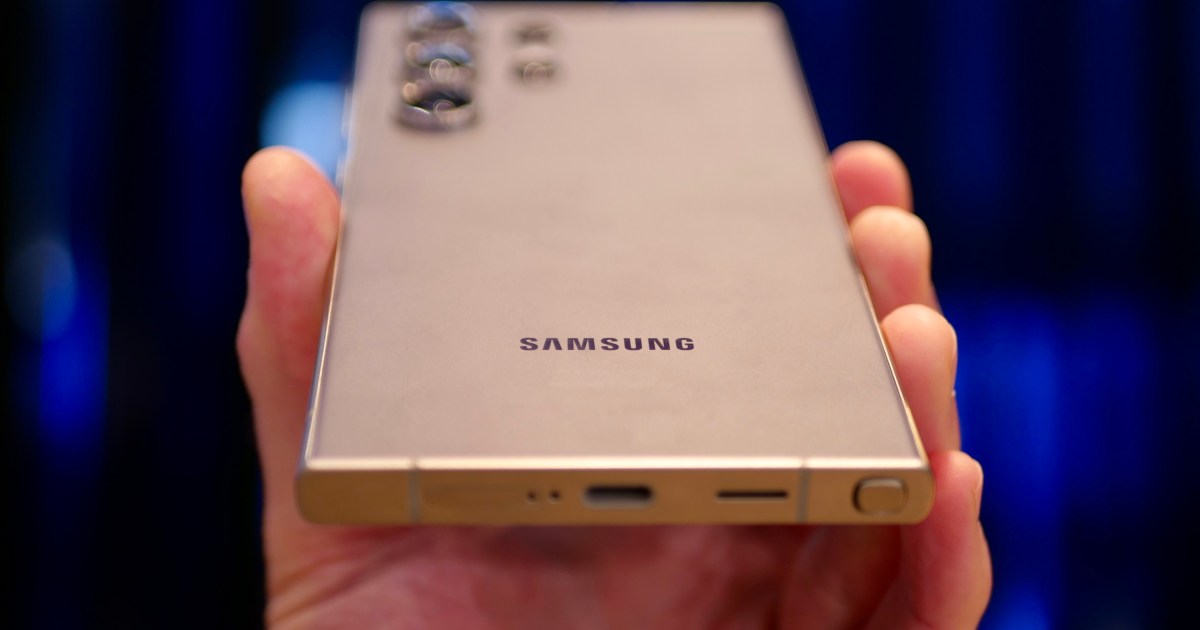Small smartphones have historically struggled, often hampered by poor battery life despite their desirable pocketability. Apple’s iPhone 12 mini and 13 mini exemplify this challenge, experiencing underwhelming sales due to battery limitations. However, 2024 has redefined the concept of “small” in the flagship phone market, with compact devices finally rivaling their larger counterparts. There’s still one piece missing, though, which we’ll explore.
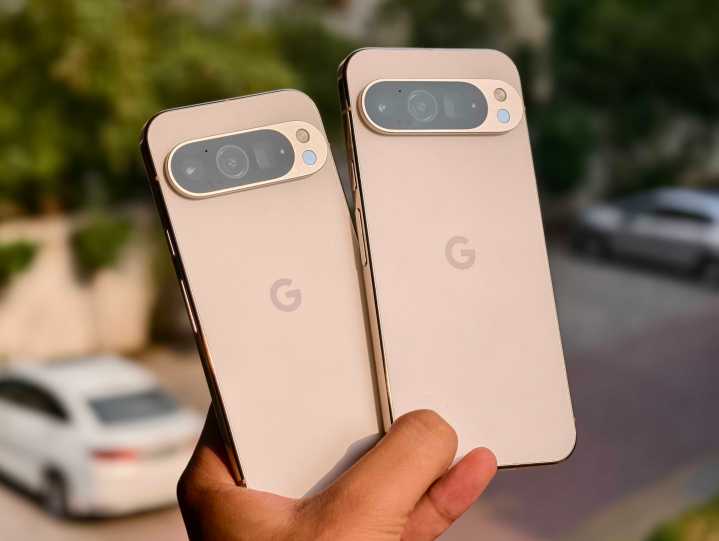 Google Pixel 9 Pro and Pixel 9 Pro XL in hand.The Google Pixel 9 Pro and Pixel 9 Pro XL demonstrate the new trend of offering similar specifications in different sizes.
Google Pixel 9 Pro and Pixel 9 Pro XL in hand.The Google Pixel 9 Pro and Pixel 9 Pro XL demonstrate the new trend of offering similar specifications in different sizes.
No More Compromises: Pro Features in a Compact Size
For years, small “Pro” flagships were treated as an afterthought. Apple, for instance, reserved the advanced 5x telephoto camera for the iPhone 15 Pro Max, leaving the iPhone 15 Pro with older optics. Similarly, the Samsung Galaxy S24 and the Google Pixel 8 lacked the camera capabilities of their Ultra and Pro counterparts, respectively. Consumers were forced to choose between top-tier camera features and a smaller form factor.
2024 changed the game. Both Apple and Google released flagship phones that offer comparable camera systems across different sizes. The iPhone 16 Pro and 16 Pro Max now share the same primary, ultrawide, and telephoto lenses, as well as software features. Google adopted a similar strategy with the Pixel 9 Pro and the new Pixel 9 Pro XL, offering identical camera systems in two sizes. Finally, users could enjoy advanced optics without sacrificing portability.
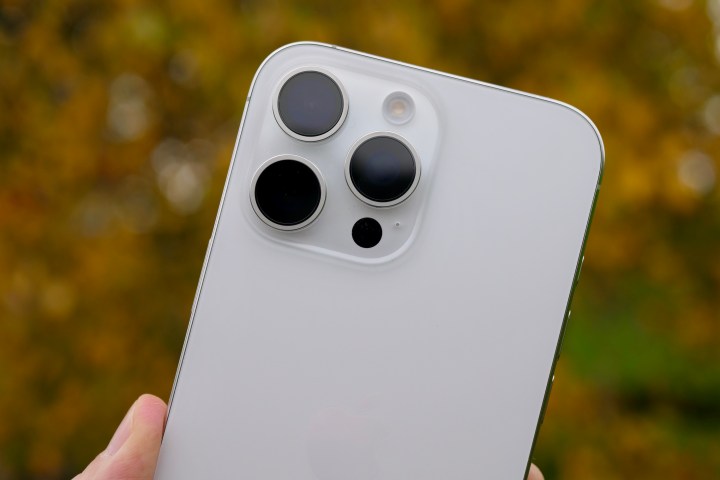 The Apple iPhone 16 Pro MaxThe Apple iPhone 16 Pro Max, showcasing its powerful camera system, now mirrored in the smaller iPhone 16 Pro.
The Apple iPhone 16 Pro MaxThe Apple iPhone 16 Pro Max, showcasing its powerful camera system, now mirrored in the smaller iPhone 16 Pro.
The 6.3-Inch Sweet Spot: Redefining “Small”
The definition of “small” has evolved. The compact flagships of 2024 are larger than the truly miniature phones of the past, but this shift has allowed for the inclusion of Pro-level features. The 6.3-inch display, as seen in devices like the Xiaomi 14, represents a compelling balance between pocketability and usability, offering ample screen real estate without compromising battery life.
The Missing Piece: Battery Life
While 2024 brought parity in camera technology, battery life remains a challenge for compact flagships. The iPhone 16 Pro, for example, has seen battery life decrease with each update. Although bigger phones still offer longer battery performance, the gap is narrowing.
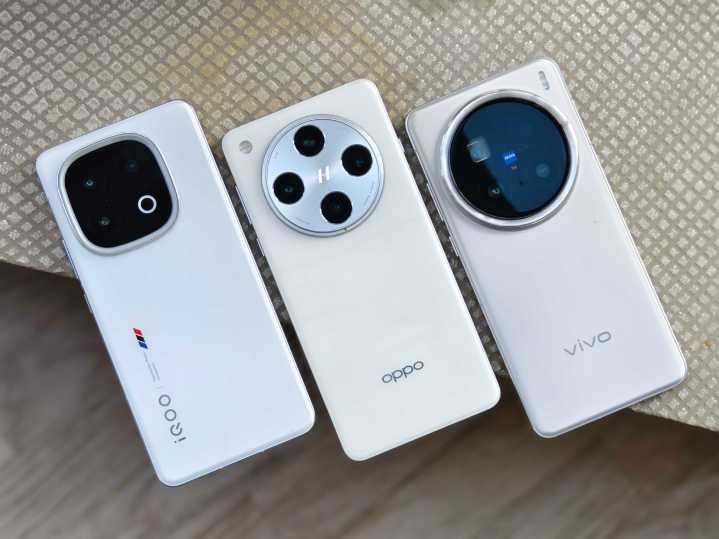 iQOO 13, Oppo Find X8 Pro and Vivo X200 Pro — silicon carbon battery-equipped phones.Phones equipped with silicon carbon batteries, like the iQOO 13, Oppo Find X8 Pro, and Vivo X200 Pro, offer significantly improved battery life.
iQOO 13, Oppo Find X8 Pro and Vivo X200 Pro — silicon carbon battery-equipped phones.Phones equipped with silicon carbon batteries, like the iQOO 13, Oppo Find X8 Pro, and Vivo X200 Pro, offer significantly improved battery life.
The Silicon Carbon Solution: A Glimpse into the Future
The key to unlocking longer battery life in compact phones lies in new battery technology. The Vivo X200 Pro Mini exemplifies this, packing a substantial 5,700mAh silicon carbon battery into its 6.3-inch frame, surpassing the battery capacity of larger phones like the Pixel 9 Pro XL (5,060mAh) and Samsung Galaxy S24 Ultra (5,000mAh). Silicon carbon batteries offer higher energy density, enabling greater capacity within a smaller physical size and reducing overall weight. Devices like the Honor Magic V3, Oppo Find X8 Pro, and Vivo X200 Pro demonstrate the real-world benefits of this technology, offering all-day battery life and fast charging capabilities.
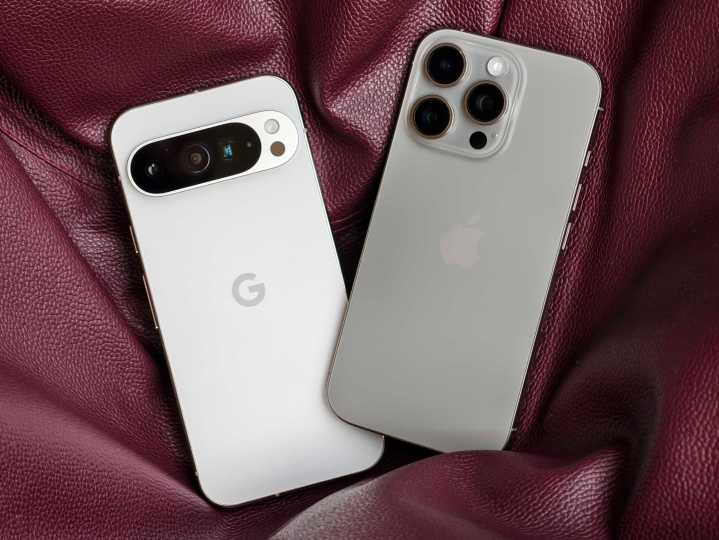 Pixel 9 Pro and iPhone 16 Pro.The Pixel 9 Pro and iPhone 16 Pro represent a significant step forward for compact flagships, but battery technology remains a key area for improvement.
Pixel 9 Pro and iPhone 16 Pro.The Pixel 9 Pro and iPhone 16 Pro represent a significant step forward for compact flagships, but battery technology remains a key area for improvement.
2025: The Year of the True Compact Flagship?
2024 proved that powerful cameras can exist in compact phones. While Samsung might not follow this trend with the Galaxy S25, companies like Apple, Google, and Vivo are leading the way. With the continued development and adoption of silicon carbon batteries, 2025 holds the potential for truly exceptional compact flagships – devices that offer both top-tier camera systems and all-day battery life in a pocketable form factor.



